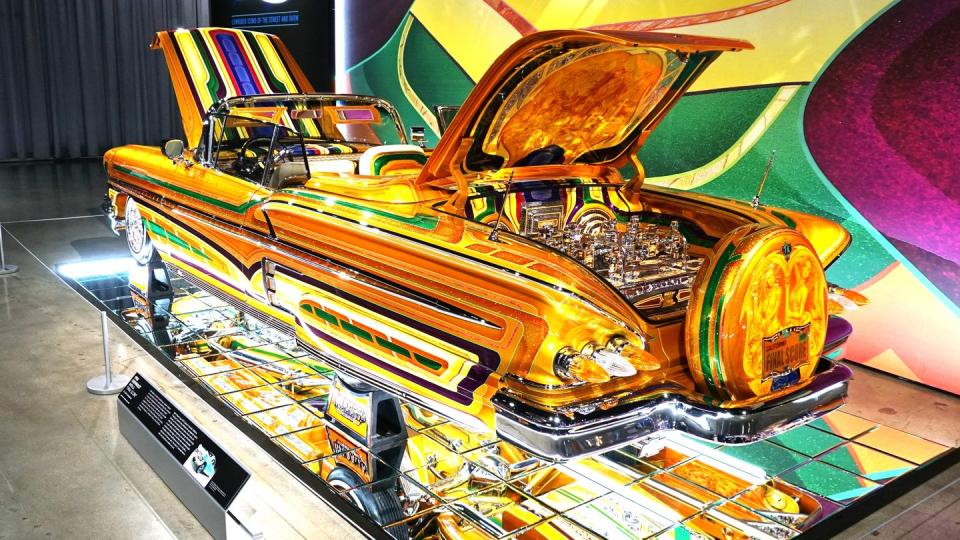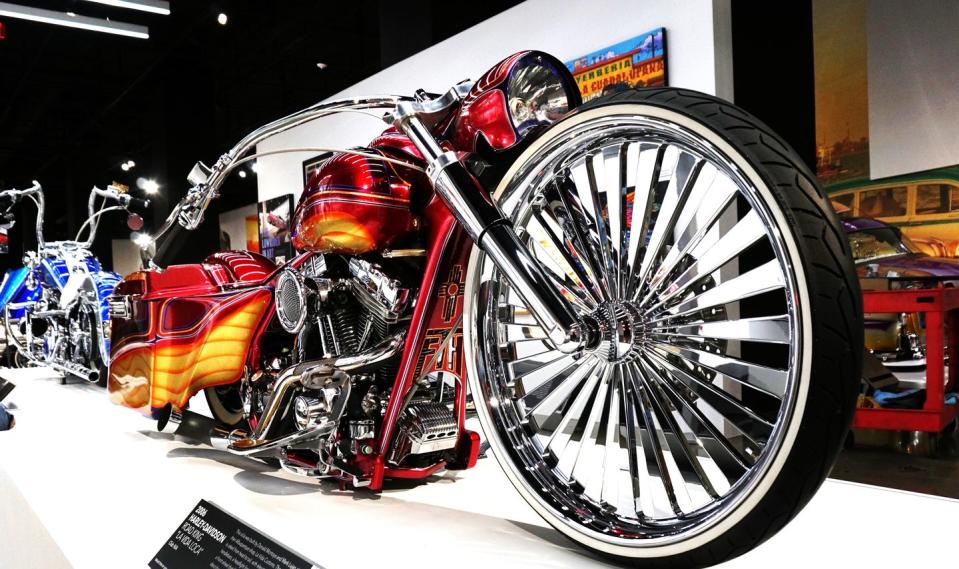How Lowriders Tell the Story of an Entire Culture

Depending on which entrance you take—and I recommend the one between the elevators that’s usually closed off to the public (see if the door’s locked)—when you step into Best in Low, the new lowrider exhibit at the Petersen Automotive Museum in Los Angeles, you will be dazzled. You may even gasp. I myself blurted out a Keanau Reeves-worthy “Whoa!”
“It’s like stepping into a jewelry box,” said Bryan Stevens, director of exhibitions at the Peterson.
Wheeled jewels. If your image of a lowrider is just a sandbagged Chevy with bright paint, get yourself to the Petersen Automotive Museum in Los Angeles sometime in the next 13 months while the show is running and prepare to be gobsmacked.

There are cars you’d expect to see, like the iconic Gypsy Rose 1964 Chevy Impala that has become the face of lowriding almost since the artform was created over 50 years ago. There’s a 1937 Buick built by the Ruelas brothers that could be the first lowrider ever made. And there’s a 1958 Chevrolet Impala that has won Lowrider of the Year three times in a row and is considered the current king of low ‘n’ slow.
The first thing you’ll be amazed by is the detail, all the brilliant, flashing metalflake, the tones and hues of which are brought out by well-aimed lighting that makes the whole scene in the Mullin Gallery dance. Then you notice the metal engravings that adorn some of the cars, a technique less-widely known only a few years ago but which has come to prominence recently.
“Low riding as a subject matter has traditionally been what brings in the most people,” said Stevens. “This is the only subject we’ve done four exhibits on, because we recognize its popularity and its importance to L.A. history and L.A. culture.”
It’s more than just a car exhibit.
“I’m really using the cars to help tell the story of Chicano and Black L.A., and how young men were using cars to express identity, to build community,” said Dr. Denise Sandoval, a professor of Chicano Studies at Cal State Northridge and part of the curating team. “What we were drawn to was the way that people of color also began to explore their identities, learn customizing skills, and build community. I think the lowrider, in particular, has become an iconic part of Chicano culture.”
More than any other automotive art form, lowriders tell a story of cultural identity.
“For the Mexican-American experience, it definitely becomes like a template of our part in American history,” said Sandoval. “It is car culture using art to tell our story.”
It’s a big story. The exhibit shows techniques used to craft these cars, from metal etching to paint to the hydraulics that make the cars hop. The exhibit takes up part of the lobby, part of the parking garage, and all of the ground-floor Mullin Family Grand Salon, which previously housed beautiful French cars of the 1930s.
“We’ve never done it this way,” said Stevens. “We’ve focused in the past on history and culture and where lowriding came from, but we’ve never focused on the thing that most people respond to with these cars, which is the craftsmanship. So this time we’re really diving into the craftsmanship and how the cars come to be and why they look the way they do and how they compete, how the craftsmanship then becomes an aspect of competition, and they compete for awards and try and one up each other to be better and more spectacular than everybody else.”
They’re pretty much all spectacular. So go see Best in Low: Lowrider Icons of the Street and Show at the Petersen Automotive Museum in Los Angeles. Petersen.org

 Yahoo Autos
Yahoo Autos 